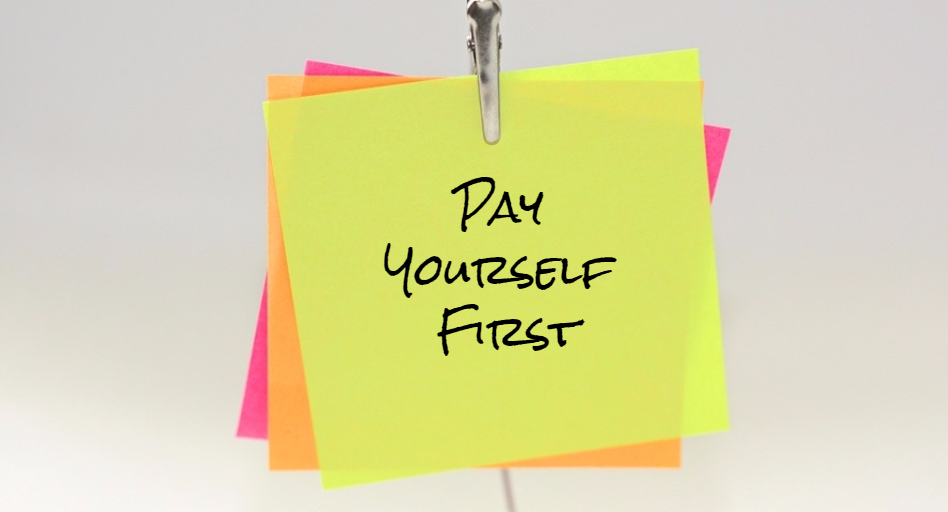Odds are you will always stay ahead if you pay yourself first, consistently. The first dollars in to your pockets should stay in your pockets, and the rest, spend it how you please. In today’s world, it is very difficult to live by that adage, not because we know it is obviously right, but because there are more and more pressures on our money than ever before. According to an article written by Red Crow back in 2015, the average person will see up to 10,000 advertisements each day! In addition to that, rent seems to be going up in most places, which takes a good chunk of money each month. Utilities, phone bills, gas, food and groceries, etc. all put pressure on how much we can save. The key is to start saving early and often.
The first step is to create a system to save money consistently each paycheck. There are 2 places that most people will save to early on – a savings account and their employers’ retirement plan. Most people have one checking and one savings, but they are linked and money constantly flows back and forth. For your savings account, have two - one at the same bank as your checking and another savings at a totally different bank from your checking account. The point is to eliminate any urge or temptation of moving money from savings back to checking. That isn’t true savings. Your account at a separate bank should be your true savings. I can’t tell you how often I have people tell me, well I saved $20,000 but I had to move $5,000 or $10,000 back to checking for (insert expenditure here). So you really only saved $10,000 or $15,000 last year… Keep your true savings separate from your lifestyle. The other savings vehicle that people contribute to early on is usually their employer’s retirement plan – 401(k), 403(b), IRA, Roth IRA, etc. To start off, take advantage of the employers match. Get this going, and if you want to do more later on, then increase it. For more on this, see my article on <Insert link for 401(k) v 401(nay)>.
The goal is to save 20-25% of your gross income (salary, bonus, commission, etc. before taxes). The national average household savings rate is 5.3%, and in most cases that’s what is being matched in a retirement plan and just a small portion to cash. If you are saving just 5% of your income throughout your working years, and plan to step off into your dream retirement in 20 or 30 years, you are going to be in for a rude awakening.
Create good savings habits now, don’t wait until your next pay check to start. You can always do it later, but tomorrow never comes. If you are not at 20-25% now, push yourself to save more in order to get there. In order to build muscle in the gym, you need to keep increasing the weight you put up. It is the same concept with your savings. Make it a point to save $50, $100, $500, $1,000 more each paycheck and push yourself until it becomes uncomfortable. The only way to know your true potential is to push and save more and more until it hurts. That is when you begin to realize what you are truly capable of, just like how I find out how capable (or lack thereof) I am to lift 30 pound dumbbells at the gym.
Once you create this habit, you will begin to see your other true savings account build up. Once you get to a point where you have a cash cushion that you are comfortable with, that’s where the fun begins. Stay tuned for the remainder of the “Getting Started in Your 20s” series…
Joie de Vivre!
References:
https://fred.stlouisfed.org/series/PSAVERT
https://tradingeconomics.com/united-states/personal-savings
http://www.nytimes.com/2007/01/15/business/media/15everywhere.html



